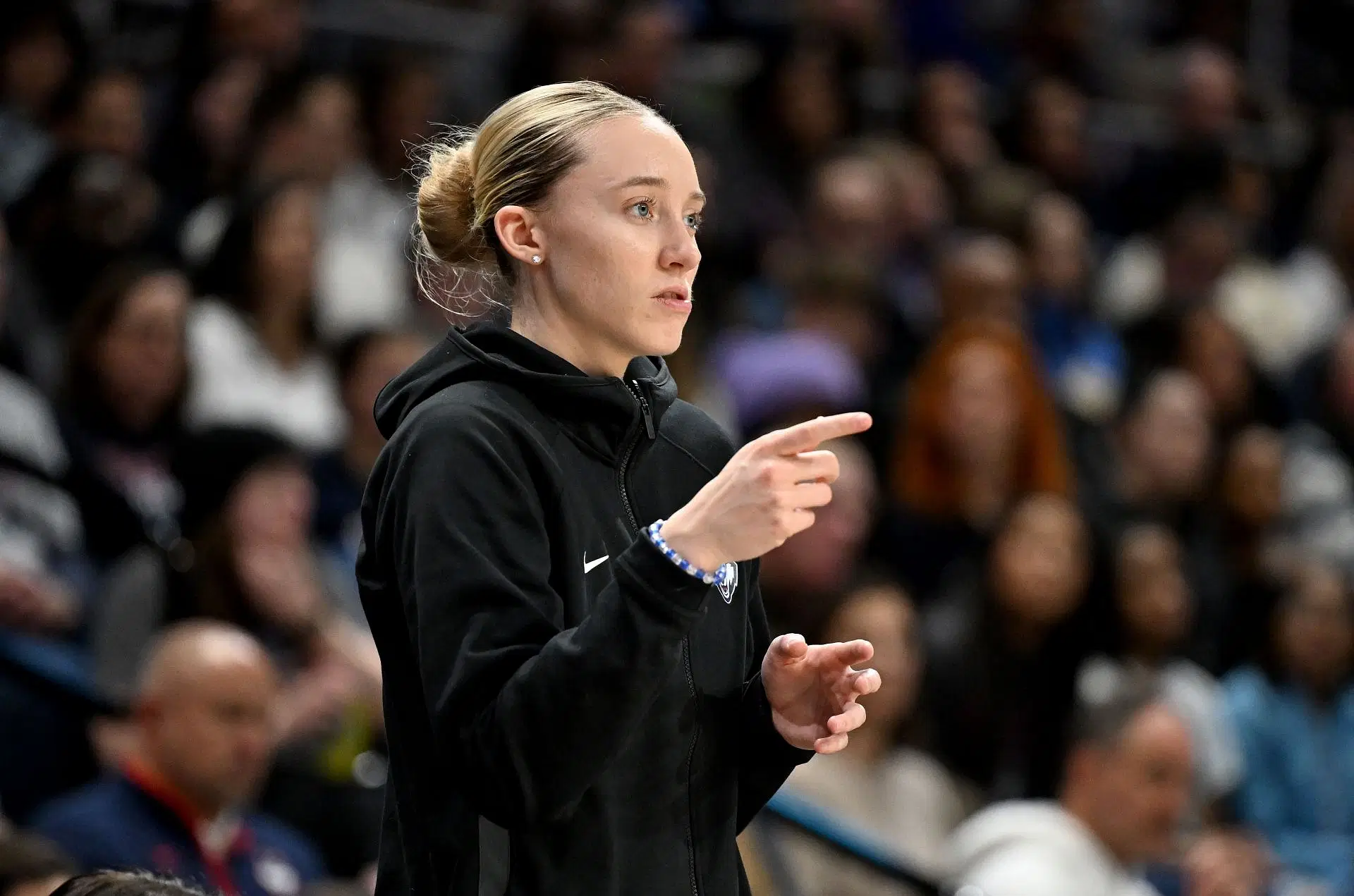In the realm of women’s college basketball, few players have garnered as much attention and acclaim as UConn’s star guard, Paige Bueckers. Known for her exceptional skills and leadership on the court, Bueckers has faced some of the most formidable opponents and their passionate fan bases. Following a challenging loss to the Tennessee Volunteers, Bueckers offered candid insights into the varying atmospheres encountered at Tennessee, Notre Dame, and South Carolina. Her reflections shed light on the unique challenges posed by these environments and the impact they have on visiting teams.
The Tennessee Experience: A Cauldron of Passion
The University of Tennessee’s Thompson-Boling Arena is renowned for its electrifying atmosphere. With a seating capacity exceeding 21,000, it stands as one of the largest venues in women’s college basketball. The sea of orange-clad fans creates an intimidating environment for any visiting team. Bueckers described the experience as a “hostile environment,” emphasizing the intensity and fervor of the Volunteers’ supporters.
This passionate fan base is deeply rooted in Tennessee’s storied basketball history. The late Pat Summitt, a coaching legend, cultivated a culture of excellence and fan engagement that persists to this day. The fans’ unwavering support provides the Volunteers with a significant home-court advantage, often rattling even the most composed opponents.
Notre Dame: A Blend of Tradition and Tenacity
Playing at Notre Dame’s Purcell Pavilion presents a different set of challenges. The arena, though smaller than Thompson-Boling, offers an intimate setting where fans are in close proximity to the action. This closeness amplifies the crowd’s energy, creating a charged atmosphere that can be daunting for visitors.
In a recent matchup, Notre Dame’s sophomore guard, Hannah Hidalgo, delivered a standout performance, contributing significantly to the Fighting Irish’s victory over UConn. Bueckers acknowledged Hidalgo’s impact, noting, “She does a lot of great things offensively and defensively. She’s a pest.” This acknowledgment underscores the dual challenge of contending with both a formidable opponent and a fervent fan base.
South Carolina: A Fortress of Support
The University of South Carolina’s Colonial Life Arena has emerged as one of the most formidable venues in women’s basketball. Under the leadership of Coach Dawn Staley, the Gamecocks have built a powerhouse program, and their fans have responded with unparalleled enthusiasm.
In a thrilling overtime game, Bueckers showcased her resilience by scoring 31 points, leading UConn to a narrow victory over the top-ranked Gamecocks. Reflecting on the game, she remarked on the intensity of the environment, highlighting the challenges posed by both the team’s prowess and the crowd’s energy.
The Psychological Impact of Hostile Environments
Competing in such charged atmospheres requires mental fortitude. The constant noise, pressure, and opposition from thousands of fans can disrupt a player’s focus and performance. Bueckers’ experiences underscore the importance of mental preparation and resilience.
UConn’s head coach, Geno Auriemma, has often emphasized the need for his players to maintain composure in hostile settings. Following a loss to South Carolina, Auriemma critiqued the team’s performance, stating, “I don’t think she was any good today, to be honest with you,” referring to Bueckers. His candid assessment highlights the high expectations and the challenges of performing under pressure.
Strategies for Overcoming Hostile Environments
To succeed in such environments, teams must employ specific strategies:
- Mental Conditioning: Regular sessions with sports psychologists can help players develop coping mechanisms to handle pressure and maintain focus amidst chaos.
- Simulated Environments: Practicing with simulated crowd noise can acclimate players to the distractions they’ll face, reducing the shock factor during actual games.
- Team Cohesion: Fostering a strong sense of unity ensures that players support each other, providing internal motivation that can counter external hostility.
- Focus on Fundamentals: Emphasizing basic skills and strategies can help players concentrate on the game itself, rather than the surrounding environment.
The Broader Implications
Bueckers’ reflections offer valuable insights into the broader dynamics of college basketball. Hostile environments, while challenging, contribute to the sport’s allure and excitement. They test athletes’ limits, pushing them to elevate their game and develop resilience.
For fans, creating a formidable home atmosphere is a point of pride, reflecting their dedication and passion. However, it’s essential to balance enthusiasm with sportsmanship, ensuring that the environment remains challenging yet respectful.
Conclusion
Paige Bueckers’ experiences at Tennessee, Notre Dame, and South Carolina highlight the significant role that fan environments play in college basketball. These “hostile” settings test players’ mental and physical limits, contributing to their growth and the sport’s dynamic nature. As athletes navigate these challenges, they develop resilience and adaptability, essential traits for success both on and off the court.



